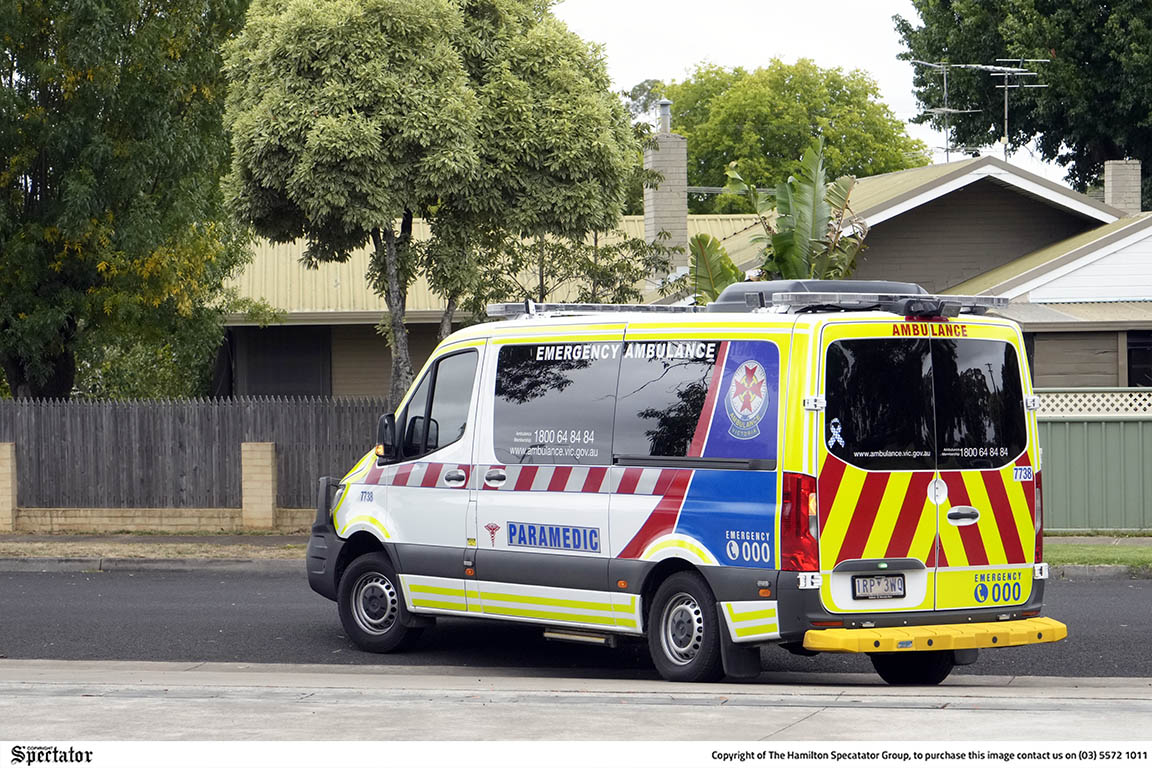
THIS week concerns have arisen that some patients who have dialysis treatment at Western District Health Service (WDHS) will no longer be able to access Non-Emergency Patient Transport (NEPT) via Ambulance Victoria and they will need to make their own travel arrangements to the Dialysis Unit for treatment, some several days each week.
Many of these patients are elderly and do not drive.
NEPT is for patients who require clinical monitoring or supervision during transport, but do not require a time critical ambulance response.
Most NEPT transfers occur between hospitals, or between home and hospital. Some aged care patients may also be transported to and from specialist health appointments and rehabilitation.
However, there is concern for those patients who are older and not able to drive or without private travel availability.
The Spectator has been made aware that the cost of taxi fares for at least two of WDHS’ dialysis patients is around $100-150 each way (from small towns in the area – at least three times per week, sometimes more when necessary) – well beyond their financial capacity.
The Nationals have taken up the cause and raised it directly with the health minister, Mary-Anne Thomas in State Parliament on behalf of rural residents.
Lowan MP, Emma Kealy said, “Local people don’t have the luxury to jump on a train or a tram to get to their nearest health service”.
“Elderly people have to rely on family taking time off work or ask friends to transport them to their treatment – people can feel like they’re a burden – that’s why the government should provide funding for this service.
“The service should be there for those people – no matter where you live or what your health needs are you should be able to access health and not be told with 14 days’ notice that you can no longer access this service.
“It’s just another example that the Allan Labor Government can’t manage the health system and locals are paying the price.”
However, Ambulance Victoria specialist operations and coordination executive director (acting), Michael Georgiou said there had been no change to eligibility for NEPT.
Rather, as background, there has been a 25 per cent increase in demand for NEPT since 2019 meaning at times Ambulance Victoria have needed to use emergency vehicles for non-emergency trips, to help meet demand.
Ambulance Victoria said recent analysis of bookings shows that at least one in 10 patients currently accessing NEPT resources don’t meet the existing criteria because they don’t need clinical monitoring or supervision for their travel and could use alternative transport options.
“These rules ensure it’s available for those who need clinical care during transport and help ambulance services focus on the sickest Victorians first,” Mr Georgiou said.
Each time NEPT is used for someone who doesn’t need clinical care, it puts extra pressure on paramedics, and they were working with health services to ensure bookings follow the rules and to share other transport options, like public transport, taxis, or community services.
To ensure NEPT can support those who need the service, eligibility criteria will enforce existing NEPT Regulations from Monday, September 30.
This means any bookings that do not meet these criteria will no longer be accepted.
This will help Ambulance Victoria to significantly reduce the strain on air and road ambulances and ensure that NEPT services can continue to meet the needs of the growing Victorian community, while also improving overall ambulance availability.
Criteria to qualify for the use of NEPT services included:
• The patient must require active clinical monitoring, care or supervision during transport provided by either a paramedic, health professional or qualified Patient Transport Officer or Attendant; and
• The transport must have been authorised by an appropriate health professional.
• Require the use of specialised medical equipment contained within the vehicle; or
• Require the clinical skill levels and qualifications of the staff in the vehicle; or
• Have an illness or a disability that makes it impractical to use any other form of transport, for example, severe immobility or disorientation
WDHS chief executive, Rowena Clift said that WDHS would remain dedicated to supporting the community and that they would work closely with patients who do not meet the NEPT criteria to identify alternative transport solutions.
“With the increasing demand for ambulance services, Ambulance Victoria (AV) has notified WDHS that Non-Emergency Patient Transport should be reserved for patients who require medical supervision during transit,” she said.
“At Western District Health Service, our priority is ensuring that all patients can access the care they need, and we encourage anyone facing challenges with transport to discuss options with their clinician or reach out to the WDHS Community Transport Service for assistance.”
This enforcement comes on the back of the revelation, including in Hamilton, that last Saturday night at least 30 ambulance crews across Melbourne and 20 in rural Victoria, were dropped due to high levels of sick leave.
There are normally around 120 ambulances working night shifts each night, however, on Saturday night there were 90 in action, leaving a significant shortfall of ambulance resources across the Metropolitan Region.
Ambulance Victoria members reported that there were dropped rural ambulances in Hamilton, Barwon Heads, Norlane, Warrnambool, Traralgon, Morwell, Warragul, Ballarat (ALS and MICA), Rupanyup, Cobram, Shepparton, Swan Hill, Heathcote, Bendigo, Mildura, Romsey, Kyneton, Inglewood and Rochester.
It is alleged that at certain locations across the state, multiple crews calling for Intensive Care back up for critically unwell patients were told none were available.
In some instances, Code 1 cases were held for over an hour for available crews with crews driving 60 kilometres or more to get to Code 1 cases.
Victorian Ambulance Union secretary, Danny Hill said members rarely get breaks, almost never finish on time and they are exhausted and burnt out.
“So, this is the reality we are facing,” he said.
“We have been warning about the need to better support the workforce, so we have a healthy and well supported workforce.
“If you don’t support the workforce, then the response to the community suffers”.






